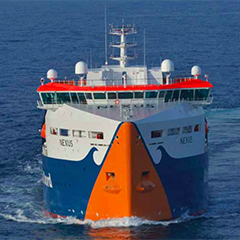While oil and gas production may not always go hand in hand with the wind industry, shipbuilders like Damen are finding synergy across energy sectors. Peter Robert, Business Development Manager Offshore Wind talks to PES about the company’s latest developments.
PES: Welcome back to PES. For the benefit of new readers, would you care to introduce your company and outline how you serve the wind industry?
Peter Robert: Damen Shipyards Group operates 32 shipbuilding and repair yards, employing 9,000 people worldwide. We have delivered more than 5,000 vessels in more than 100 countries, and deliver some 160 vessels annually to customers worldwide.
We offer a wide range of products, including tugs, workboats, naval and patrol vessels, high speed craft, cargo vessels, dredgers, vessels for the offshore industry, ferries, pontoons and superyachts.
In addition to ship design and shipbuilding, Damen Shiprepair & Conversion (DSC) has a worldwide network of 15 repair and conversion yards with dry docks ranging up to 420 x 80 metres. Conversion projects range from adapting vessels to today’s requirements and regulations to the complete conversion of large offshore structures. DSC completes around 1,500 repair and maintenance jobs annually.
PES: And how has business been since we last spoke?
PR: Very good, we have seen some specific vessel types developed for the offshore wind market finding their way in the oil & gas industry. At the moment the Twin Axe 2610 total stands at 40 vessels sold.
PES: Can you tell us about your involvement with The European Innovation Project LeanShips?
PR: Damen Shipyards is coordinator of this EU funded project. In LeanShips, over 46 partners from all over Europe work together on 8 different demonstrators. Damen is also responsible for one of these demonstrators and we contribute to two others. Our own demonstrator entails the development, construction and real-life assessment of a CNG fuelled RSD tug. We do this together with MTU, who is responsible for the high speed gas engines, and Svitzer, who will operate the tug. As a coordinator we are responsible for the communication with the EU. Moreover, we are responsible for streamlining the communication within the consortium and facilitating the progress of the more-or-less autonomous demonstrators. It is the highest ambition of the project to create value beyond the collective impact of the demonstrators and hence create a green leverage effect on the entire (European) shipping community. One way of doing this is by collecting and combining the lessons learned.




























